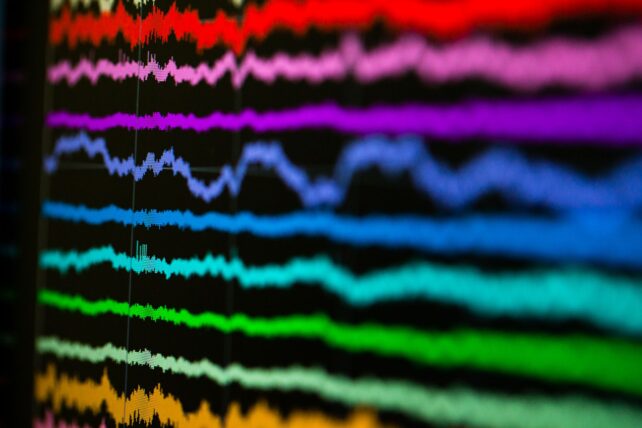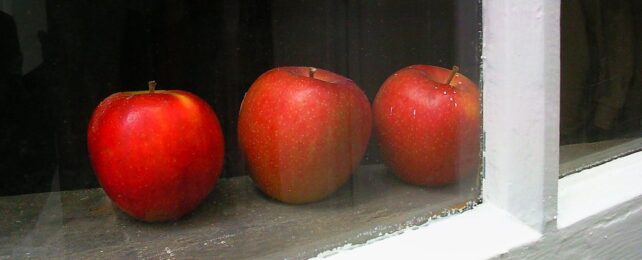Quick, how many apples are in the photo above?
It's easy to see there are three, but thanks to a distinct processing mechanism in your brain, it might have been even easier than you realize.
According to a new study, the human brain has two separate ways of processing numbers of things: one system for quantities of four or fewer, and another system for five and up.
Scientists have known for a long time that people respond differently when asked to quickly discern quantities above or below this threshold, but until now it wasn't clear if this was really evidence of two discrete neural mechanisms, the study's authors explain.
Presented with four or fewer objects, humans can usually identify the sum at first glance, without counting. And we're almost always right.
This ability is known as "subitizing," a term coined by psychologists last century, and it's different from both counting and estimating. It refers to an uncanny sense of immediately knowing how many things you're looking at, with no tallying or guessing required.
While we can easily subitize quantities up to four, however, the ability disappears when we're looking at five or more things. If asked to instantly quantify a group of seven apples, for example, we tend to hesitate and estimate, taking slightly longer to respond and still providing less precise answers.
Since our subitizing skills vanish so abruptly for quantities larger than four, some researchers have suspected our brains use two distinct processing methods, specialized for either small or large quantities.
"However, this idea has been disputed up to now," says co-author Florian Mormann, a cognitive neurophysiologist from the Department of Epileptology at the University Hospital Bonn.
"It could also be that our brain always makes an estimate but the error rates for smaller numbers of things are so low that they simply go unnoticed."
Previous research involving some of the new study's authors showed that human brains have neurons responsible for each number, with certain nerve cells firing selectively in response to certain quantities.
Some neurons fire mainly when a person sees two of something, they found, while others show a similar affinity for their own number of visual elements.
Yet many of these neurons also fire in response to slightly smaller or larger numbers, the researchers note, with a weaker reaction for quantities further removed from their numerical focus.
"A brain cell for a number of 'seven' elements thus also fires for six and eight elements but more weakly," says neurobiologist Andreas Nieder from the University of Tübingen. "The same cell is still activated but even less so for five or nine elements."

This kind of "numerical distance effect" also occurs in monkeys, as Nieder has shown in previous research. Among humans, however, it typically happens only when we see five or more things, hinting at some undiscovered difference in the way we identify smaller numbers.
"There seems to be an additional mechanism for numbers of around less than five elements that makes these neurons more precise," Nieder says.
Neurons responsible for lower numbers are able to inhibit other neurons responsible for adjacent numbers, the study's authors report, thus limiting any mixed signals about the quantity in question.
When a trio-specializing neuron fires, for example, it also inhibits the neurons that typically fire in response to groups of two or four things. Neurons for the number five and beyond apparently lack this mechanism.
To investigate this effect, the researchers recruited 17 patients at University Hospital Bonn preparing for brain surgery to treat epilepsy. As part of their treatment, the patients had microelectrodes inserted into their temporal lobes.
"We were able to use them to measure the reaction of individual nerve cells to visual stimuli," says first author Esther Kutter, a PhD student in Mormann's research group.
The study subjects watched a computer screen, which displayed varying numbers of dots for half of a second. After this glimpse, researchers asked the subjects whether they had seen an odd or even number of dots.
The subjects answered quickly and accurately for up to four dots, the study found, making virtually no mistakes.
Once there were five or more dots, however, both errors and response time began to grow along with the number of dots.
This research offers novel clues about the mechanics of human brains, the study's authors say, revealing important details about how we process numbers – and potentially helping explain why some people struggle to.
More research like this could improve our understanding of dyscalculia, for example, a developmental disorder associated with a poor grasp of numbers and number-related concepts.
The study was published in Nature Human Behavior.
